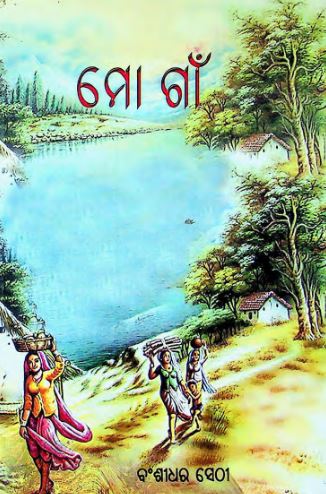Published in 2014, Mo Gan by Bansidhar Sethi is an enchanting collection of Odia poetry that delves deep into the essence of life, culture, and identity in Odisha. With a gentle yet impactful lyrical style, Sethi captures the beauty and complexity of village life, weaving a vivid tapestry of emotions, experiences, and the timeless charm of rural existence. The collection is marked by its profound themes and evocative imagery, making it an essential read for both Odia literature enthusiasts and anyone fascinated by the nuances of rural life.
At the heart of “Mo Gan” lies Sethi’s deep-rooted connection to his village and the vibrant landscapes that shape it. His poem “Village Life” serves as a poignant exploration of the joys, struggles, and intimate rhythms of rural living. Through a series of accessible yet profound verses, Sethi conveys the essence of community, tradition, and the enduring spirit of the villagers.
In “Village Life,” Sethi immerses readers in the daily routines and longstanding customs that define a village’s character. The poet paints vivid pictures of dawn breaking over the fields, the sound of a conch shell echoing through the morning air, and the harmony of nature intertwined with human existence. Each line is charged with sensory details, allowing readers to visualize the lush green rice paddies, hear the laughter of children playing by the river, and feel the warmth of the sun on their faces.
Sethi’s portrayal of village life goes beyond mere description; it reflects a deep appreciation for the simplicity and richness found in those moments. He pays homage to the elder generations, honoring their wisdom and the cultural heritage they pass down. Through the lens of nostalgia, the poet captures the essence of childhood memories, festivities, and the collective consciousness that binds the community together. The reader is invited to experience the joy of harvest festivals, the enchantment of moonlit nights, and the solace of gathering around the village well.
Furthermore, Sethi does not shy away from addressing the challenges faced by rural communities. Through his verses, he sensitively portrays issues such as economic struggles, migration, and the impact of modernization. By highlighting these realities, the poet underscores the resilience and adaptability of village life, where traditions are cherished even amidst change. This duality—of joy intertwined with sorrow—creates depth in his exploration of rural existence.
As the poem unfolds, Sethi’s voice resonates with a love for Odisha and its rich cultural tapestry. He uses dialect and idiomatic expressions that enrich the narrative, adding authenticity and depth. The seamless intermingling of nature, human emotion, and cultural identity makes “Village Life” not only a personal reflection but also a universal commentary on the human experience.
Mo Gan stands as a significant contribution to Odia literature, with Bansidhar Sethi’s “Village Life” exemplifying the brilliance of his poetic vision. It is a celebration of the simplicity, beauty, and challenges of village life, offering readers a glimpse into the heart of a culture that is both unique and relatable. Through his evocative language and heartfelt observations, Sethi invites readers to revisit their own roots and reflect on the essence of community, love, and belonging. In “Mo Gan,” readers will find a resonant exploration of life that is both timeless and contemporary, making it a treasure trove for those who appreciate the beauty of rural narratives.
Books Info
| Books name | Mo Gan |
| Author | Bansidhar Sethi |
| No Of pages | 114 |
| Publisher | Satyam Publications |
| Publication | 2014 |
| Printed At | Gopinaha Offsets |
| Distributor | NA |

